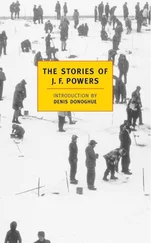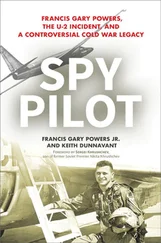Years ago, in Stony Brook,Weber had worked with a patient suffering from hemispatial neglect: the notorious “Neil,” from Weber’s first book, Wider Than the Sky . A stroke at fifty-five — the age Weber had now reached unscathed — left the office machine repairman with a lesion in his right hemisphere that overnight blotted out half his world. Everything to the left of Neil’s sight midline folded into nothing. When he shaved, Neil left the left side of his face untouched. When he sat down to breakfast, he failed to eat the left side of his omelette. He never acknowledged people who approached him from the left-hand side. Weber asked Neil to draw a baseball diamond. Neil’s third base trickled just off the edge of the pitcher’s mound. Even in Neil’s memory, recounting the day’s events, the left half of the world crumpled and collapsed. Closing his eyes and imagining himself in front of his house, Neil could see the garage on the right but not the sunroom on the left. When giving directions, he gave them all exclusively as a series of right turns.
This deficit went beyond vision. Neil couldn’t see that he wasn’t seeing. Half the map where he stored space itself was gone. Weber tried a simple experiment, a scene he dramatized in Wider Than the Sky . He held a mirror perpendicular to Neil’s right shoulder and made Neil look at an angle into the mirror. The area to the left of Neil’s body now appeared to Neil’s right. Weber held a silver good luck charm above Neil’s left shoulder and told Neil to reach for the charm. He might as well have asked the man to sail to a bearing that had fallen off the compass. Neil hesitated, then stabbed out. His hand crashed into the mirror. He fumbled against the glass, even groping behind it. Weber asked what he was doing. Neil insisted that the charm was “inside the mirror.” He knew what mirrors were; the stroke had left that intact. He knew it was crazy to think that the charm could be in the glass. But in his new world, space extended only to the right. Inside the mirror was the more likely of two unreachable places.
Cases such as Neil — thousands of them a year — suggested two truths about every normal brain, both of them shattering. First: what we took for a priori, absolute apprehension of real space in fact depended upon a fragile chain of perceptual processing. “Left” was as much in here as out there . Second: even a brain that thought it was measuring, orienting, and inhabiting plain-old given space might already, without the slightest notion, have lost as much as half a world.
No brain, of course, could completely credit this. Weber had liked Neil. The man absorbed a crushing blow without bitterness or self-pity. He made his adjustments and pressed on — if not forward, then northeasterly. But after the last set of examinations, Weber never saw Neil again. He had no idea what became of the man. Some other neglect wiped him out, reduced him to story. The man Weber had met and interviewed at length passed into the man he described in the pages of his book. He’d left “Neil” behind in the prose looking glass, lost somewhere, off in an imperceivable direction, an unreachable place deep inside the narrative mirror…
Weber woke early, from rough sleep.He showered to wick off the sluggishness, remembering, with a pang of conscience as the hot stream revived him, that he’d taken one just hours before. He made himself a packet of coffee in the complimentary coffeemaker, housed, for some reason, next to the bathroom sink. Then he sat at the writing desk, flipping through a rustic, hand-illustrated guidebook provided there.
The name “Nebraska” comes from an Oto word meaning flat water. The French, too, called the river that ran through it “Platte.”
Precisely how he’d pictured the place: a wide, flat hollow at the heart of the map, so level it would make Euclid blush. The real, rolling landscape surprised him. He sipped the grim coffee and examined the guidebook’s cartoon map. Towns dotted the blank space like so many circled wagons. He found Kearney — at 25,000, the fifth-biggest settlement in the state — in the southernmost oxbow of the Platte, cowering from too much openness.
To the north and west, the Gangplank, a great swatch of eroded sediment, juts out across what was once, 100 million years ago, the floor of a vast ocean…
Major Stephen Long’s 1820 expedition of Army Engineers called the area the Great American Desert. In his report to Washington, Major Long declared the crust of land “wholly unfit for cultivation and of course uninhabitable by a people depending upon agriculture.” The expedition’s botanist and geologist concurred, noting the “hopeless and irreclaimable sterility” of a country that should “forever remain the unmolested haunt of the native hunter, the bison and the jackal.”
Herds of bison once scoured this basin. Brown rivers of meat flowed across the prairie, holding up wagon trains for days…
Herds all done away with, the book said. The jackal and the native hunter, too: cleared off. Prairie dog cities, their underground streets stretching for miles, drowned in poison. River otters, all but eliminated. Pronghorn, gray wolves: all shot. Page 23 showed a color plate of two mounted, moth-eaten carcasses in the State Museum in Lincoln. Only two larger species now survived in the region in any quantities:
For six weeks out of every year, cranes along the Platte outnumber humans several times over. They migrate over a quarter of the earth’s circumference, briefly stopping here for whatever scraps of waste grain they can scavenge.
He finished the coffee and rinsed the cup. He donned his coat and tie, then, remembering his promise to Mark Schluter, removed them. In his shirtsleeves, he felt naked. Down at the front desk, he snatched a cosmetically perfect if tasteless apple and called it breakfast. He followed his directions to Good Samaritan Hospital and made his way up to Neurology. Dr. Hayes’s nurse showed Weber into the office at once, trying not to stare at the famous personality.
The neurologist looked young enough to be Weber’s son. Gawky ectomorph with angry skin who steered his body like a legacy device. “I just want to tell you what an honor this is. I can’t believe I’m talking to you! I used to read your books like comics, back in med school.” Weber thanked him as graciously as he could. Dr. Hayes spoke deliberately, as if delivering a belated lifetime achievement award to a silent-film actor. “Incredible case, isn’t it? Like seeing Bigfoot stroll out of the Rockies and into your neighborhood supermarket. I actually thought of your stories when we worked him up.”
Fresh copies of Weber’s last two books sat on Hayes’s desk. The young neurologist picked them up.
“Before I forget, would you mind…?” He handed them to Weber, along with a heavy Waterman pen. “Could you make them out: ‘To Chris Hayes, my Watson in the strange case of The Man Who Doubled His Sister.’”
Weber searched the neurologist’s face for irony but found only earnestness. “I…Could I just…?”
“Or whatever you feel like writing,” Dr. Hayes said, crestfallen.
Weber wrote: For Chris Hayes, with thanks. Nebraska, June 2002. Man was not only the commemorating animal ; he was the animal who insisted on commemorating in advance. Weber handed the books back to Hayes, who read the inscription with a tight-lipped smile. “So you met him yesterday. Eerie, isn’t it? I’m still disconcerted, talking to him, and it’s been months. Of course, our group will be writing him up for the journals.”
Bow shot. Weber held up his hands. “I don’t want to do anything to…”
“No, of course not. You’re writing for a popular audience.” Broadside. “There’s no overlap.” Hayes rolled out the complete history, including the pages no one had shown Karin Schluter. He showed Weber the paramedics’ notes, three lines of green ballpoint on a form dated Feb. 20, 2002: ’84 Dodge Ram, rolled off south shoulder of North Line Road, between 3200 and 3400W. Driver pinned upside down in vehicle. Unbelted, unreachable, and unresponsive. The one accessible door was crumpled beyond opening. The paramedics couldn’t enter or move the truck, for fear of crushing the victim. They could only wait for support and watch the police take photographs. Weber studied one of the pictures. “Wrong way up,” Hayes said. Weber flipped the image. A long-haired Mark Schluter hunched on top of himself, a glaze of blood seeping up his face through his open collar. His head bowed against the roof of the cab, in inverted prayer.
Читать дальше












